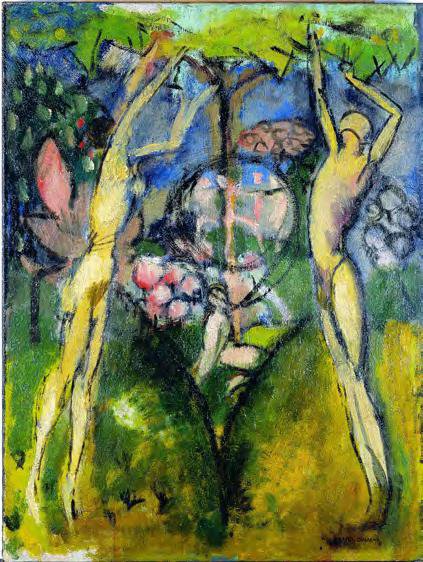Marcel Duchamp
dal 23/9/2014 al 4/1/2015
Segnalato da
23/9/2014
Marcel Duchamp
Centre Pompidou, Paris
Painting, even. With a completely new and knowingly paradoxical approach, the exhibition is designed to show the paintings of the man who, in common modernist opinion, killed painting. To situate this work in the context of a long and complex creative process, Duchamp conscientiously gathered his paintings together in the hands of a small circle of collectors, and replicated them in his Boite-en-Valise for posterity and those he called "the viewers".

curated by Cécile Debray, assisted by Valérie Loth
Through a 100-odd works brought together for the first time, the Centre Pompidou is devoting
a monograph exhibition to the painted work of Marcel Duchamp. With a completely new and
knowingly paradoxical approach, the exhibition is designed to show the paintings of the man
who, in common modernist opinion, killed painting.
At the heart of this pictorial work and the discourse of the exhibition, visitors are invited to take
a new look at the paintings and drawings that led Marcel Duchamp to create his masterpiece,
known as Le Grand Verre, La mariée mise à nu par ses célibataires, même (The Bride Stripped Bare
by her Suitors, Even (The Large Glass)), which was begun in 1910 and declared unfinished
by the artist in 1923.
To situate this work in the context of a long and complex creative process, Duchamp conscientiously
gathered his paintings together in the hands of a small circle of collectors, and replicated them
in his Boîte-en-Valise (Box in a Suitcase) for posterity and those he called «the viewers».
Little-known in Europe, these paintings (now mostly in the Philadelphia Museum of Art) have been
reunited at the Centre Pompidou, surrounded by the pictorial, scientific and technical sources,
as well those acquired from books, that Duchamp drew on during those crucial and fertile years.
The exhibition thus provides new keys for more clearly interpreting and understanding
a programmatic work that is also a manifesto.
From humorous drawings to the Nu descendant l’escalier, from mathematics to the theme
of the «Bride», from works on perspective to the films of Etienne-Jules Marey and Georges Méliès,
from Impressionism to Cubism, and from Cranach the Elder to Edouard Manet and Odilon Redon,
by way of Francis Picabia and František Kupka, the circuit takes the public step by step through
the construction of one of modern art’s richest and most fascinating works, Le Grand Verre,
with the aid of essential and unexpected references. The exhibition reveals Duchamp’s pictorial
studies, his Fauve period, the influence of Symbolism, his Cubist explorations, and the nonsense
and humour that imbued his work, notably through the artist’s original notes, now in the Centre Pompidou.
It highlights his interest in literature and words, as well as in the optical, physical and mechanical sciences.
With Marcel Duchamp. La peinture, même., the Centre Pompidou helps to write the history of the
art of our times, providing a fresh look at the work of one of the most iconic figures in 20th
century art.
Image: MARCEL DUCHAMP, Le Printemps ou Jeune homme et jeune fille dans le printemps, 1911, huile sur toile, 65.70 x 50.20 cm. The Vera and Arturo Scharz Collection of Dada and Surrealist Art in the Israel Museum Collection, Jérusalem © succession Marcel Duchamp / ADAGP, Paris 2014
ommnunications and
partnerships department
75191 Paris cedex 04
director
Benoît Parayre
telephone
00 33 (0)1 44 78 12 87
e-mail
benoit.parayre@centrepompidou.fr
press officer
Dorothée Mireux
telephone
00 33 (0)1 44 78 46 60
e-mail
dorothee.mireux@centrepompidou.fr
assisted by
Stella Wauthier
telephone
00 33 (0)1 47 48 12 49
e-mail
stella.wauthier@centrepompidou.fr
Centre Pompidou
75191 Paris cedex 04
Opening hours
Exhibition open every day
from 11 am to 9 pm except Thuesdays
Tarif
11 to 13 €, depending on the period
concessions : 9 to 10 €
Valid on day of issue for the musée
national d’art moderne and all exhibitions
Free admissions for Centre Pompidou
members (annual pass holders)



